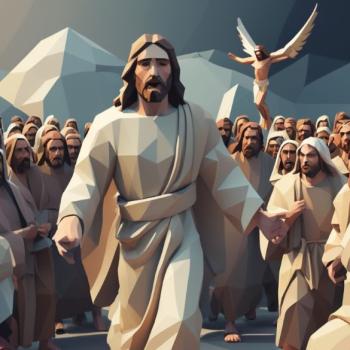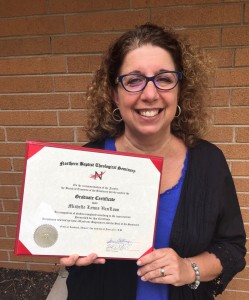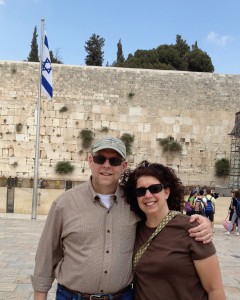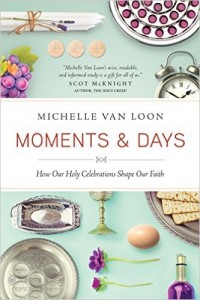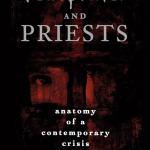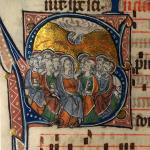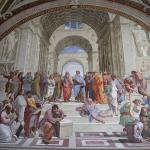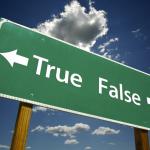Though I’m not a fan of the genre, the one TV game show I have enjoyed watching on occasion (usually in the company of a senior citizen) is ‘Jeopardy’. Contestants whose brains were overstuffed warehouses of trivia about topics ranging from 18th Century European Composers to the Reptiles of South America. Debonair long-time host Alec Trebek’s role is to give increasingly difficult answers in a particular category while three contestants vie to ask the right question.

Part of our trip to Israel gives us time to spend with the good people of the Caspari Center, where my husband serves as a board member. If you’re not familiar with Caspari, it would be well worth a few minutes of your time to visit their site. They serve here quietly, but provide remarkable training, networking and research to congregations and academics alike. As they’ve done on most every visit, Caspari staffers have put together an education day for the board members and some of their other ministry partners who are here in Jerusalem for various meetings. Today’s education day did just what a day of learning is supposed to do: it formed a bunch of new questions in me.
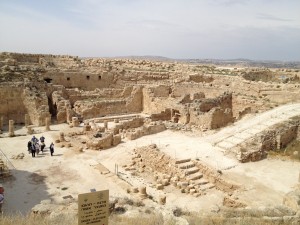
We visited Herodium, in the desert east of Bethlehem. Our group was guided through the site by an Israeli archaeologist who has been working at the site for several years. He took us on the usual tour of the place, but also brought us into an area not open to the public so we could see a room filled with frescoes – some of the largest intact ones ever discovered from that period. Above the magenta and rust panels in the picture below, there were faint painted windows with pastoral scenes in this closed room.

The Herod who built this fortress and burial ground for himself (adding many, many feet of dirt and rock to the desert tel so it could be even more majestic and imposing!) also rebuilt the Temple in Jerusalem, as well as Masada, Caesarea and more. He was a one-man W.P.A., except instead of taxes and unemployed people, he turned countless thousands into slaves for his cause. The ruins were fascinating, but I couldn’t help but make the connection between Herod’s penchant for building big things using slave labor and this story. Somehow, my few solemn moments as I tried to imagine the human cost of this edifice didn’t really fit the crime. Amazing how a couple thousand years silences the day-to-day suffering that must have occurred during the building of these super-sized building projects.
Unlike ‘Jeopardy’, I left with some questions and no five hundred dollar answers: What sort of edifices (monuments to our own egos) are we building today? And who are we enslaving to make sure they get created?
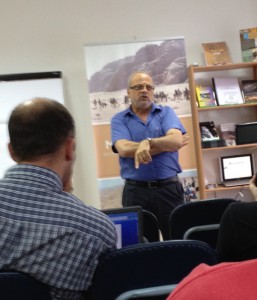
We had a great lunch (a dozen salads, skewers of grilled meats, laffa, pita, mint tea and Turkish coffee (these items may well be on the menu at the Marriage Supper of the Lamb), and then headed to the offices of Musalaha Ministry of Reconciliation for a seminar where we discussed the challenges and opportunities between Jewish believers in Jesus and Palestinian born-again Christians. Even though the two groups share a common faith, there is plenty to divide us: history, ethnicity, culture, identity and theology, though it appears that theology is actually the least of the problems.
More questions in the wake of that discussion: We each are called to a be ministers of reconciliation – yet how is reconciliation worked out in our lives? What part belongs to us? What part is the work of the Spirit? What is the nature of Biblical reconciliation?
As I listen to the honking horns tonight in Jerusalem, these questions shape my prayers.





